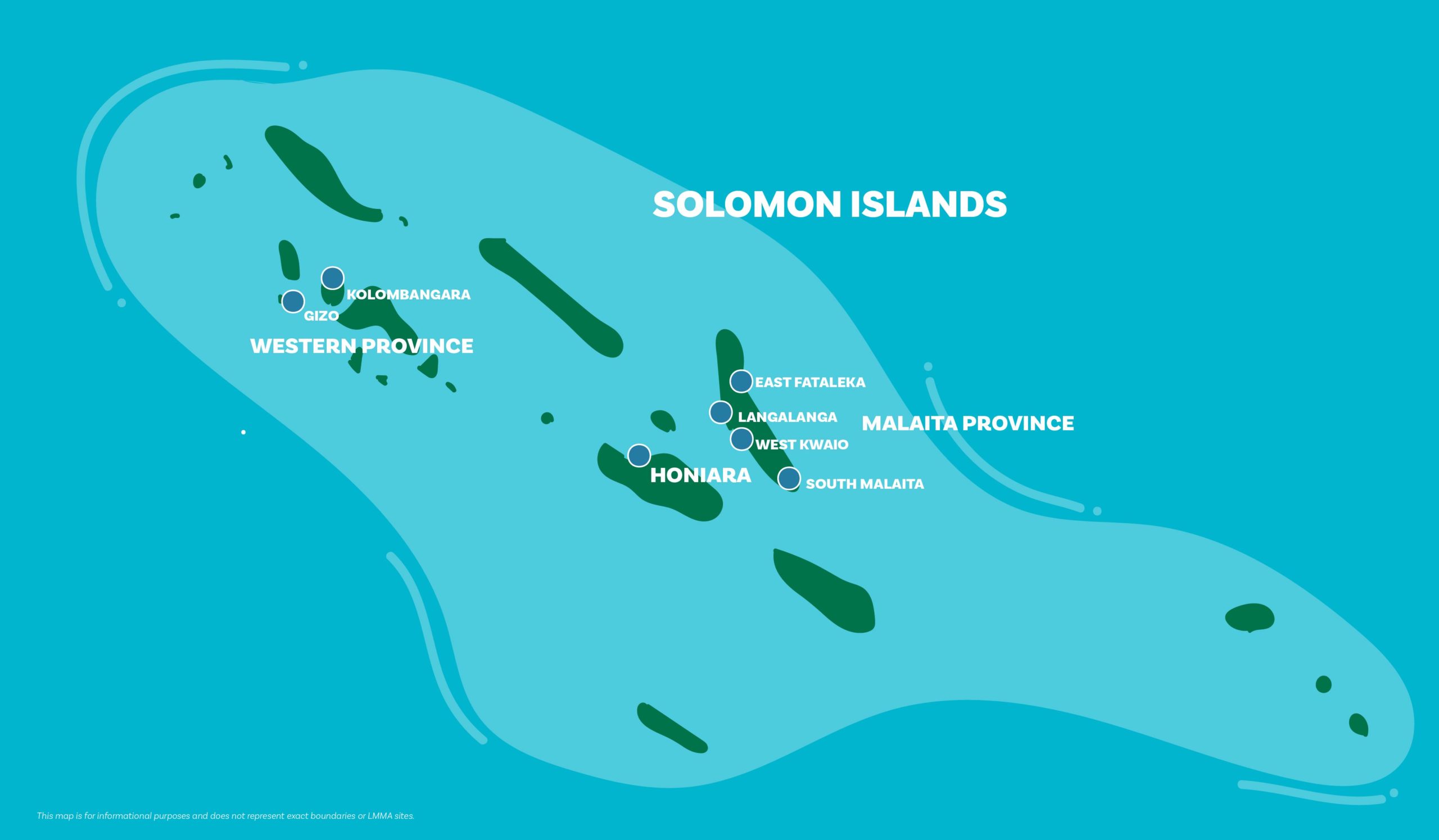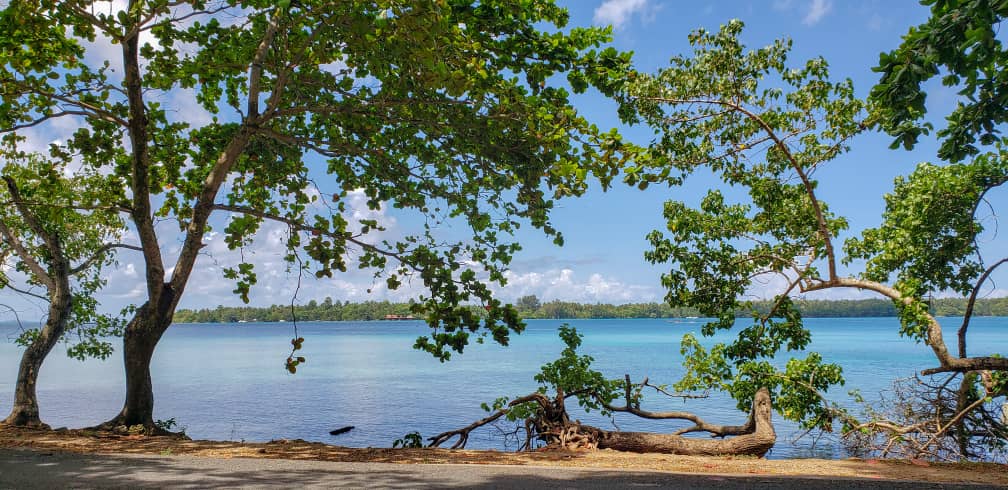Capacity building programmes in government and communities are enabling communities in the Solomon Islands to be empowered when it comes to making better marine resource management decisions.
WorldFish hosted a community-based resource management training for 40 community participants and government officers in July. The community participants represented 25 communities from East Fataleka, South Malaita, West Kwaio and Langalanga regions of Malaita, and from two communities in the Western Province from Gizo and Kolombangara (see map). Government offices were from national and provincial fisheries offices.

Map of where community-based resource management training participants were coming from. Source: LMMA Network.
The objective of the training was to equip community facilitators with the know-how on how to develop and implement marine resource management plans within their respective communities and with their neighbours, and ensuring management decisions are participatory as well as gender and socially inclusive.
The training was guided by an updated Facilitator Guide Handbook for Community-based Fisheries Management.
The training was funded by the Pacific-European Union Marine Partnership (PEUMP) Programme, and as part of the Pacific Framework to upscale community-based fisheries management, it is encouraging to hear how the training has empowered the community facilitators to support their communities to better manage their marine resources.
Empowering community facilitators
The training started with discussions on why marine resources are important. Participants identified the most important resources for food, cash or kastom:
Participants shared why these species were valuable, with one participant sharing a story about the Yellow-lipped sea-krait:
“The snake is a kind of sea chief. You have to appease it and praise it. Whilst praising it, you set up the lit up fronds out in the sea and the sea worms will come out. If you make any mistake, you will see the snake appear, it means you will have lost the sea worm harvest”.
The training then focused on the need for healthy habitats and participants were introduced to some basic ecological principles. Working in groups, participants drew the lifecycle of species they were familiar with, including the habitats of each lifecycle stage, showing for example that a Skipjack tuna live in the deep sea as an adult but travels to the mangroves to lay its eggs.
Participants then discussed the various threats to marine resources.
After covering threats to marine resources, participants were introduced a ‘fish tool’. The fish tool is a simple process used to develop a management plan. Each participant started drafting their own management plan according to the following components:
1. Direction the fish is swimming – the goal of the CBRM plan.
2. Eyes – Map what can be seen.
3. Scales on the body – are the rules.
4. Teeth –The teeth of the fish represent enforcement of the rules.
5. Currents – are expected and unexpected challenges or difficulties.
6. Tail – the CBRM committee.
7. Species name – this is the title of the management plan.
Towards the end of the training, two community facilitators from WWF’s Community Facilitator’s program in the Western Province provided a presentation on their roles and responsibilities, and achievements and challenges being a Community Facilitator back in their own communities. By sharing their own stories, this motivated the new community facilitators-to-be to act, with a participant announcing:
“There is no time to sit down and wait (…) We should leave no chance to wait for things to happen, we must be the cause for change.”
After discussions on national fisheries regulations and a fieldtrip to OKRONUS management area in Langalanga, the training ended with all participants sharing some reflections on how the training will assist them to empower others to get involved and be part of participatory, inclusive marine management:
“From very young kids to old people sometimes have answers to everything saying they know everything already, thus we will try our best to put across what we’ve learnt to everyone back home and start implement CBRM and what we have learnt from this workshop”. (Community Facilitator).
“Challenges, or strong sea currents, are many in CBRM. In such trainings we all are learning from each other. Our experiences shared is very powerful to scale out CBRM to wider communities. We are now actioning networking, though the CBRM strategy is still in draft, we are already actioning elements for networking.” (Ministry of Fisheries and Marine Resources Representative).
As for real impact in remote Solomons, we can report that some of the newly trained community facilitators have shared their new knowledge not only with their own communities but also their neighbours ones, with around 20 community visits made.
Most community visits have been followed by village meetings to discuss marine resource management, and what rules or tabu areas will be useful for their fishing grounds. This has led to the establishment management committees and four community-based resource management plans are currently being drafted in Olo’ofolo, Tanhuka, Manu and Tab’a. In Manu and Tab’a, these plans include up to 7 and 11 communities, respectively.
Photo slideshow of community trainings held in Malaita Province & Western Province. Photo source: Worldfish.
This project was facilitated by Worldfish in partnership with the Locally-Managed Marine Area Network, through the Pacific-European Union Marine Partnership (PEUMP) Programme, with financial support from the European Union and the Government of Sweden. Goes Here

The PEUMP programme is a EUR 45M Pacific regional initiative funded by the European Union (EU) and the Government of Sweden, working in partnership with the Pacific Community (SPC), Secretariat of the Pacific Environment Programme (SPREP), Forum Fisheries Agency (FFA) and the University of the South Pacific (USP) to implement activities across six key result areas in 15 Pacific countries.














